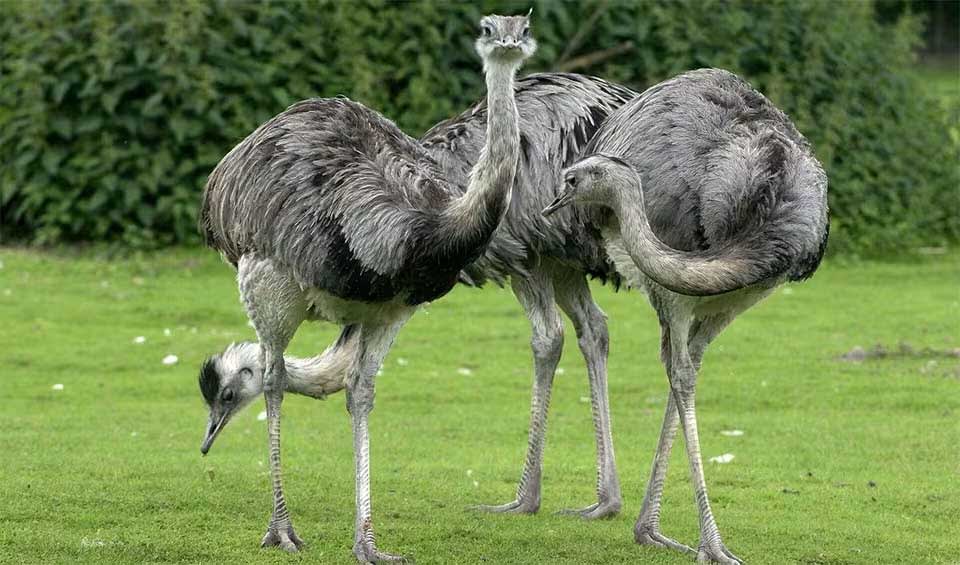Rhea – Rheas
The Greater rhea is the largest of all South American birds
Rheas are the largest birds in South America and are part of a larger group of birds known as ratites. This group also includes the ostriches, emus, cassowaries, and kiwis. Like their distant African cousins, the ostriches and rheas are flightless birds with powerful legs adapted for running at high speeds.
There is some debate among ornithologists regarding the classification of rheas. Generally, it is agreed that there are at least two species: the Greater Rhea (Rhea americana) and the Lesser Rhea (Rhea pennata). Some authorities also recognize a third species, the Puna Rhea (Rhea tarapacensis), though this classification is not universally accepted.
Greater Rheas are the largest species and can be found across a range of habitats from Brazil to Argentina and Uruguay. Lesser Rheas inhabit the open grasslands and shrublands of southern South America, while the Puna Rhea if recognized as a distinct species, is native to the high-altitude grasslands of the Andes.
Rheas have an omnivorous diet, which is quite broad and allows them to adapt to different environments. They feed on a variety of plant matter, such as leaves and fruits, as well as seeds, which are a significant part of their diet. In addition to this, they consume insects, which provide them with protein. They are also known to eat small animals like fish, rodents, reptiles, and birds when the opportunity arises. This diet reflects their adaptability and the opportunistic feeding strategies they employ.
Rheas have an economic significance in some parts of South America. They are farmed for their skin, which is used in the leather industry, and their meat, which is considered a delicacy in some regions. Their feathers have ornamental value, and their eggs, which are quite large, are used for crafts and sometimes as a source of food.
Species in this genus
Greater rhea
The largest native living bird of America
Lesser rhea
The cute birds from South America



